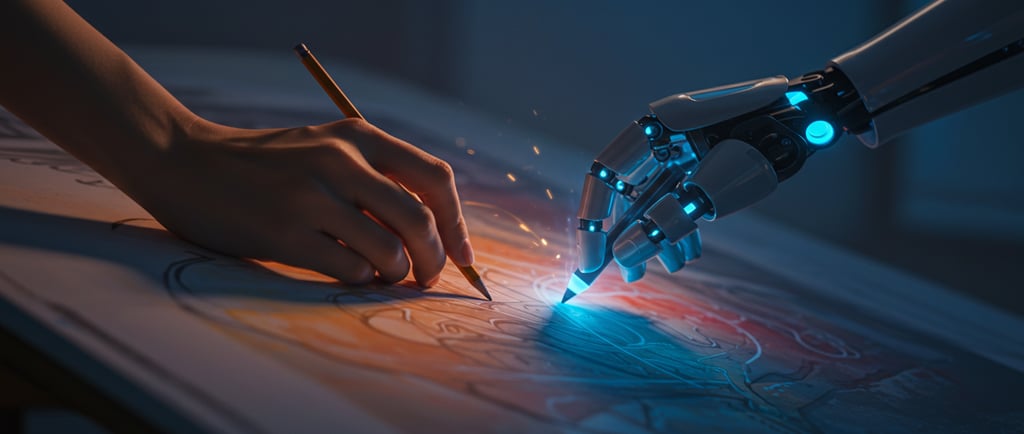AI Design: Transforming the Future in 2025
Explore how AI design is revolutionizing the future of design in 2025. Discover emerging tools, ethical challenges, and the essential skills creatives need to thrive in an AI-powered world.
WHAT'S NEXT IN AI?
5/31/20251 min read


Conclusion
As AI continues to evolve, its integration into design offers exciting possibilities and challenges. By embracing AI as a collaborative partner and honing the necessary skills, designers can unlock new levels of creativity and innovation in 2025 and beyond.
Artificial Intelligence (AI) is no longer a futuristic concept—it’s a present-day reality that’s reshaping the design landscape. As we delve into 2025, AI’s influence on design is profound, offering tools that enhance creativity, streamline workflows, and introduce new ethical considerations. This article explores the emerging trends, challenges, and skills designers need to thrive in this AI-integrated era.
1. AI as a Creative Collaborator
AI is transitioning from a mere tool to a creative partner. Designers are leveraging AI to generate ideas, automate repetitive tasks, and explore new creative directions. Tools like Adobe Firefly and Midjourney enable rapid prototyping and idea generation, allowing designers to focus on refining and personalizing their work.
2. Ethical Considerations in AI-Driven Design
With AI’s growing role in design, ethical questions arise. Issues such as data privacy, algorithmic bias, and the authenticity of AI-generated content are at the forefront. Designers must navigate these challenges by ensuring transparency in AI usage and maintaining human oversight to preserve the integrity of their work.
3. Skills for the AI-Enhanced Designer
To stay competitive in 2025, designers should cultivate the following skills:
AI Literacy: Understanding how AI tools function and how to integrate them effectively into the design process.
Critical Thinking: Evaluating AI-generated outputs to ensure they meet design objectives and ethical standards.
Adaptability: Staying abreast of evolving AI technologies and being open to continuous learning.
Collaboration: Working alongside AI as a co-creator, while also collaborating with cross-functional teams to implement AI-driven designs.
4. The Future Landscape of Design
Looking ahead, AI is set to further revolutionize design by enabling hyper-personalization, real-time adaptability, and immersive experiences. Designers will play a crucial role in guiding AI to produce work that resonates on a human level, ensuring that technology enhances rather than detracts from the creative process.
